Otitis is another word for ear infection. There are three possibilities for an ear infection; In otitis externa, the inflammation is outside the eardrum and in the ear canal. Otitis media, the inflammation is just behind the eardrum and otitis media. This last form is not very common. This inflammation is really deep in the ear and often the nerves are also affected. This article is about otitis externa and media in cats.
What causes an ear infection in cats?
Otitis externa occurs in all animals. For example, otitis externa is very common in dogs because dirt and debris get stuck in the ear. This is especially the case for lop-eared dogs and dogs that swim a lot.
Cats don't have loopy ears and generally don't go into the water very often, which is why dirt-related otitis externa in cats is less common. In cats, otitis externa is often caused by mites (ear mites) or as a result of infected combat wounds. Other common causes can be for example; Allergies, polyps, grass ears, or a narrow ear canal. Very often, otitis externa involves bacteria that maintain inflammation, so cleaning alone is not enough to treat otitis externa.
With otitis externa, the ear canal swells, usually increasing earwax builds up. This closes the ear canal so that flammable material can no longer escape. This material is then a good breeding ground for bacteria, which only worsens the inflammation.
Otitis media in cats can develop as a result of viral infections, such as cat flu. In most cases, there is a unilateral middle ear infection. In cats, a perforation of the eardrum (e.g. through a grass) can be the cause. A middle ear infection can also develop after untreated otitis externa. The infection then “flips around”. Finally, there are the polyps in the middle ear. This is a common cause of otitis media in cats. Polyps are benign bumps in your cat's ear. It's unclear exactly why these occur, and it's also unclear why polyps grow in the cat's middle ear. It is known that these polyps can grow in all possible directions. So also through the eardrum.
How do I recognize ear infections in cats?
The most common symptom of otitis externa is itching and pain. This can be done on one or both ears. Your cat scratches and shakes its head frequently. What can also be noticed is dirty dirt from the ears or a bad smell. Your cat will often let the painful ear hang down a bit, but this difference can be very small.
In addition to pain and itching, a middle ear infection is often accompanied by a loss of function. Your cat will develop hearing and balance problems. Your cat may tilt its head. In addition, a very severe middle ear infection can also lead to unilateral facial paralysis.
In the case of a middle ear infection due to a polyp, nothing is initially noticeable. As long as the polyp is only in the middle ear, it won't bother your cat. Only when the polyp starts to grow can your cat experience various problems. A secondary infection often develops, and the middle ear infection that then occurs is not due to the polyp, but to bacteria that could penetrate more easily through the growth of the polyp.
What can I do about otitis media in cats?
Otitis is a persistent infection that can only be controlled if you are consistent with your treatment. If you suspect an ear infection in your cat, you should always consult your veterinarian. The vet can look into your cat's ear and find out what the cause is. Your vet can also prescribe the right antibiotics to kill the bacteria.
Treatment often depends on the cause. If combat wounds are the cause, you will be given antibiotics to put by mouth. If you have ear mites, your vet will prescribe a remedy that kills the mites. Antibiotics are often not required. This depends a lot on what your vet sees in your cat's ear.
A middle ear infection is treated almost exclusively with antibiotics that have to be given by mouth. This is a treatment that lasts around 4-6 weeks. Many substances that can be put in the ear are dangerous if the eardrum is not intact. If it happens that your cat develops neurological symptoms after using the ear ointment, stop using it immediately and contact your veterinarian.
It is very easy to remove a polyp, but the work must be done by a specialist. If the otitis is the result of an allergy, then this also needs to be treated. Otherwise, your cat will continue to suffer from their ears.
In addition to a treatment specified by the veterinarian, you can also support the ear with special ear care. You should always discuss the use of an ear cleaner or similar during treatment with your veterinarian. In addition, you can preventively and regularly clean your cat's ears.
This text was translated by a translation machine
 Horse Pharmacy
Horse Pharmacy Rugs
Rugs Care
Care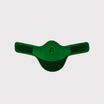 Saddle and Attachments
Saddle and Attachments Leg Protection
Leg Protection Bridles
Bridles Feed
Feed Fly Masks
Fly Masks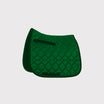 Saddle Pads
Saddle Pads Headcollars and Ropes
Headcollars and Ropes Bits
Bits Other Disciplines
Other Disciplines Reins and Auxiliary Reins
Reins and Auxiliary Reins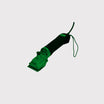 Clipping
Clipping Western
Western Eventing
Eventing Foals
Foals Reflection
Reflection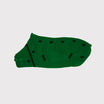 Therapy Products
Therapy Products Boots and Shoes
Boots and Shoes Breeches and Belts
Breeches and Belts Tops
Tops Safety
Safety Competition
Competition Heated Clothing
Heated Clothing Gloves
Gloves Socks
Socks Spurs and Attachments
Spurs and Attachments Technology
Technology Whips
Whips Gifts
Gifts Casual Wear
Casual Wear Underwear
Underwear Rider Pharmacy
Rider Pharmacy Bags
Bags Books
Books Laundry supplies
Laundry supplies Jewelry
Jewelry Feed and Waterbowls
Feed and Waterbowls Equipment
Equipment Tack Room
Tack Room Pest Control
Pest Control Arena
Arena Horse Toys
Horse Toys Wheelbarrows
Wheelbarrows Yard
Yard Surveillance
Surveillance Disinfect
Disinfect Washing Area
Washing Area Lighting
Lighting Horse Pasture
Horse Pasture Current Conductors
Current Conductors Pole
Pole Insulators
Insulators Energisers
Energisers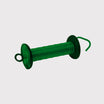 Gate Handles
Gate Handles Batteries and Accumulator
Batteries and Accumulator Nets
Nets Grounding
Grounding Tools
Tools Fencing Security
Fencing Security Wolf Defense
Wolf Defense Fencing Sets
Fencing Sets Fence locks
Fence locks Dogs
Dogs Cats
Cats Rodents
Rodents Dogs Pharmacy
Dogs Pharmacy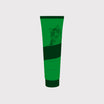 Cats Pharmacy
Cats Pharmacy Rodents Pharmacy
Rodents Pharmacy Cattle Pharmacy
Cattle Pharmacy Poultry Pharmacy
Poultry Pharmacy Veterinary Supplies
Veterinary Supplies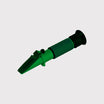 Cattle
Cattle Sheep and Goats
Sheep and Goats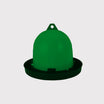 Poultry
Poultry Heat Lamps
Heat Lamps Calves
Calves Marking
Marking Halters
Halters